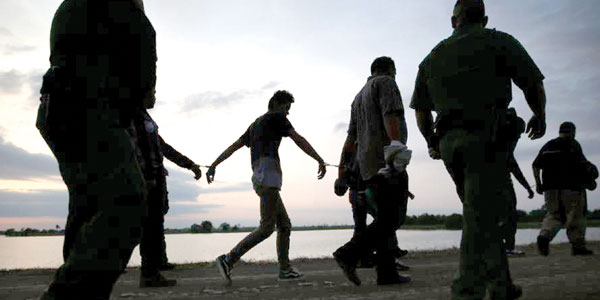
By Eulogio JP
The number of unauthorized immigrants has fallen to its lowest level in more than a decade, according to the Pew Research Center.
In late November, the center posted on its website the research findings of undocumented immigration trends in the United States since the 1990s. The data showed there were 10.7 million unauthorized immigrants in 2016, down from the peak number, 12.2 million, in 2007.
In addition, the data showed declines in the number of unauthorized immigrants from South America, Canada and Europe combined. But it also showed the number of unauthorized immigrants from Central America had increased by 375,000 over the same period. The 1.85 million Central American unauthorized immigrants in 2016 were mainly from El Salvador, Guatemala and Honduras.
Unauthorized immigrant totals also grew from India and Venezuela between 2007 and 2016. Meanwhile, declines were reported in the number of undocumented immigrants from Brazil, Colombia, Ecuador, the Korean Peninsula and Peru.
The overall decline was attributed to a large decrease in the number of Mexicans entering the country unauthorized. Nevertheless, Mexico remains the country of origin for roughly half of undocumented immigrants.
Another reason for the decline was the number of deportations that took place during those years. Deportations rose during the George W. Bush and Barack Obama administrations – from 211,000 in 2003 to a record 433,000 in 2013, according to Department of Homeland Security statistics.
On the other hand, while the unauthorized immigrant population shrank by 13 percent between 2007 and 2016, according to the Pew Research data, the lawful immigrant population grew 22 percent during the same period – an increase of more than 6 million people.
La inmigración ilegal disminuye mientras que la inmigración legal aumenta
El número de inmigrantes no autorizados ha caído a su nivel más bajo en más de una década, según el Centro de Investigación Pew.
A fines de noviembre, el centro publicó en su sitio web los resultados de la investigación de las tendencias de inmigración indocumentada en los Estados Unidos desde la década de 1990. Los datos mostraron que había 10,7 millones de inmigrantes no autorizados en 2016, cifra inferior a la cifra máxima de 12,2 millones en 2007.
Además, los datos mostraron una disminución en el número de inmigrantes no autorizados de Sudamérica, Canadá y Europa combinados. Pero también mostró que el número de inmigrantes no autorizados de América Central había aumentado en 375,000 en el mismo período. Los 1.85 millones de inmigrantes no autorizados centroamericanos en 2016 fueron principalmente de El Salvador, Guatemala y Honduras.
Los totales de inmigrantes no autorizados también aumentaron de la India y Venezuela entre 2007 y 2016. Mientras tanto, se reportaron disminuciones en el número de inmigrantes indocumentados de Brasil, Colombia, Ecuador, la península de Corea y Perú.
La disminución general se atribuyó a una gran disminución en el número de mexicanos que ingresaron al país sin autorización. Sin embargo, México sigue siendo el país de origen de aproximadamente la mitad de los inmigrantes indocumentados.
Otra razón del declive fue el número de deportaciones que se llevaron a cabo durante esos años. Las deportaciones aumentaron durante las administraciones de George W. Bush y Barack Obama, de 211,000 en 2003 a un récord de 433,000 en 2013, según las estadísticas del Departamento de Seguridad Nacional.
Por otro lado, mientras que la población inmigrante no autorizada se redujo en un 13 por ciento entre 2007 y 2016, según los datos de Pew Research, la población inmigrante legal creció un 22 por ciento durante el mismo período, un aumento de más de 6 millones de personas.










